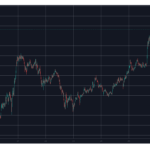Some investors believe that dividends don’t matter. That a few additional percentage points of return doesn’t make a lot of difference.
If you’re a speculator who’s aiming for a 300 percent gain on a hot stock tip, then who cares about a measly 3 or 4 percent dividend? Dividends (which are distributions of a company’s earnings issued to shareholders) are rounding errors – right?
Well, if you can consistently – that is, over an investment lifetime – generate enormous capital gains regardless of market conditions… then congratulations, you’re in the top 0.00001% of all investors anywhere and anytime, and dividends matter less.
But if you’re a mere investment mortal, dividends are central to your returns. Over the past ten years, in many markets, dividends have been the only thing separating you from making money, or losing it.
For example, in terms of capital appreciation, Singapore equities have lost an average of 0.2 percent of their value per year over the last 10 years. But with compounded dividends, the return was 3.7 percent per year. That’s not a great return – but it’s a whole lot better than a negative return. (See the chart below for more.)
The U.S. is the only major market where you would have made more through simple capital appreciation than compounded dividends over the past 10 years. For everywhere else, dividends have made all the difference.
I’ll explain this in a minute. But first, understanding how a seemingly lousy 3 or 4 percent dividend yield can make such a big difference is a function of the most powerful force in finance: Compound interest.
The magic of compounding
Here’s how compounding works… you invest a sum of money that generates a steady return. But instead of taking that return and spending it, you reinvest it by buying more of the original investment. The next year both the original investment and the reinvested interest will earn interest, which you again reinvest.













Leave A Comment